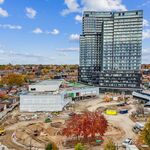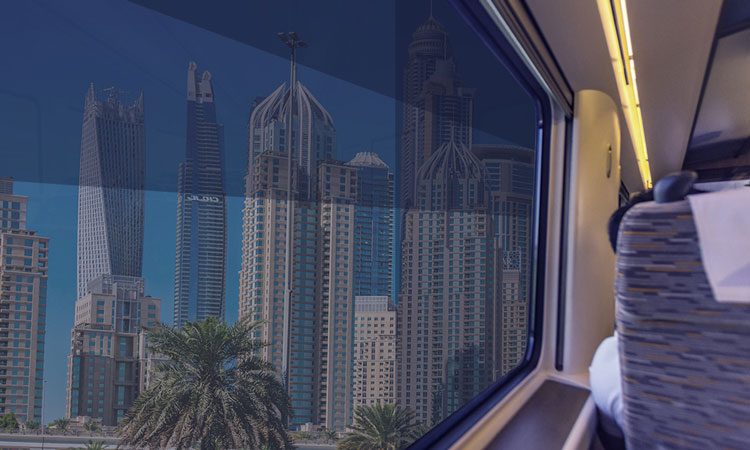Towered
Superstar
I thought @drum118 's excellent analysis deserved its own thread instead of getting buried in the Sheppard subway one:
BRT vs LRT
Over the years there have been great debates as to what is the best type of system between BRT (Bus Rapid Transit) or LRT (light Rail Transit) better known as streetcars.
Both systems have their strong points was well weak points.
One thing that get noticed more than it should, is the up front cost to build a BRT system. There is more to font end cost that needs to be looked before deciding BRT is the way to go.
It is a provident factor that BRT up front cost will wins hands down when it come to cost to built either systems, but will it do the job overtime?
One thing that needs to be looked at is the labour cost of each system as Labour eats ups 80% of operation cost and will only increase more over time. Therefore we must look at ways have to save manpower/labour to meet this growing trend.
One has to be careful as how they class a BRT from express buses. Unless a BRT is in its own ROW (Right-of-Way) like LRT, it is an express bus making limited stops using priority traffic signalizes lights. This also applies to LRT in mix traffic.
The one thing that never taken into consideration for buses or express buses is the cost to build or maintain the roads they run on as an express bus. It is the same thing when you try to compare buses to streetcars that run in mix traffic. Streetcars have to factor in the cost to build and maintain the tracks they run on even though all type of traffic use it also.
The operation cost is where LRT comes out ahead cost wise as you need less manpower to carry the same number of riders as a bus. Also, people prefer to ride steel wheels than rubber wheel, as steel wheels provide a smother ride in the first place.
Below, I have done an analyze between BRT and LRT based on a 30 year cycle starting at 2010 to 2040. I have used 60 foot articulated and 40 foot buses for BRT while use a 30m off the shelf LRT for comparison. The price is based on the current cost for the buses been received this year by Mississauga Transit.
I have also used rider standard of 70 for articulated buses, 52 for 40 foot bus and 125 for LRT. I have used single LRT to 3 car units to help to arrive at the number of vehicles needed to carry various ridership from a single point as well the headway they will run at for the point load.
I have used 3% as a yearly cost increase as to wages and 1% for the cost to purchase vehicles.
I have not taken into consideration the cost of extra employees need to be added as you add more vehicles to the fleet as it various from systems to system as well the rate of pay. You need to add a cleaner, body worker, mechanic, route supervisor and office personal to cover these extra vehicles.
I have used a hour rate for peak time based on a 40 hour week and 52 weeks for the year. I have not allow for holidays or cut in service during the summer months. I have not allow a cost to cover all the extra employees that will be need to put the vehicles on the road.
If a driver earns $60,000 that includes all benefits and holiday pay today, by 2040 they will be earning $145,636 a year, based on a yearly 3% increase. They will have earn a total of $3,000,161 over those 30 years.
The cost of the vehicles will be varies from system to system due to the size of the order and type of equipment been spec.
We live in different parts of North America where some require of us have to wear heavy coats during the winter months while other wear light jackets.
We all carry something from packsack to computers along with our goods, food, drinks onto the vehicles.
It has been claimed that 60 foot articulated buses have a crush load capacity of 125, yet based on my experience of riding them, the maximum number has been 105 during the summer month and that was very rare to see. You are lucky to see 100 riders at crush load. During the winter months, you are lucky to get 90 riders on it. Then, crush load is not the way to attract people to use a transit system in the first place and we must set ridership numbers per vehicle to make it more easy to get off or on to attract them in the first place.
As for 40 foot buses, 100 is the claim number for crush load, yet the most I have seen is 85 where people were sitting on riders laps.
I have said that the peak load of an articulated bus at Peak time is 70 at the highest loading area or point of a route, allow room if something happens along the route not plan for. This mean 55 riders will have a seat leaving 15 people to stand. The peak load for a 40 foot bus is 52 allowing 38 rider to sit and 14 to stand.
For off peak service, the carrying capacity of an articulated bus is 45 and 30 for a 40 foot bus.
Where these numbers can go out the window is when you are carrying an accessibility person, a person with a walker or strollers. Strollers are a major issue as they come in all sizes and shapes. It not bad when you have one on the bus, but anymore than one causes all kinds of problems and eat up that spare room.
Therefore for this analyze, I am using 3,000 riders from a single point. I have other data up to 10,000 riders from a single point and that information can be found in a spreadsheet Here.
Starting with 3,000 in 2010 and using the yearly increase of 2%, we will see 5,434 riders by 2040. That will have a higher impact to the final cost than the 3,000 figure I am using for this analyze.
BRT vs LRT
Over the years there have been great debates as to what is the best type of system between BRT (Bus Rapid Transit) or LRT (light Rail Transit) better known as streetcars.
Both systems have their strong points was well weak points.
One thing that get noticed more than it should, is the up front cost to build a BRT system. There is more to font end cost that needs to be looked before deciding BRT is the way to go.
It is a provident factor that BRT up front cost will wins hands down when it come to cost to built either systems, but will it do the job overtime?
One thing that needs to be looked at is the labour cost of each system as Labour eats ups 80% of operation cost and will only increase more over time. Therefore we must look at ways have to save manpower/labour to meet this growing trend.
One has to be careful as how they class a BRT from express buses. Unless a BRT is in its own ROW (Right-of-Way) like LRT, it is an express bus making limited stops using priority traffic signalizes lights. This also applies to LRT in mix traffic.
The one thing that never taken into consideration for buses or express buses is the cost to build or maintain the roads they run on as an express bus. It is the same thing when you try to compare buses to streetcars that run in mix traffic. Streetcars have to factor in the cost to build and maintain the tracks they run on even though all type of traffic use it also.
The operation cost is where LRT comes out ahead cost wise as you need less manpower to carry the same number of riders as a bus. Also, people prefer to ride steel wheels than rubber wheel, as steel wheels provide a smother ride in the first place.
Below, I have done an analyze between BRT and LRT based on a 30 year cycle starting at 2010 to 2040. I have used 60 foot articulated and 40 foot buses for BRT while use a 30m off the shelf LRT for comparison. The price is based on the current cost for the buses been received this year by Mississauga Transit.
I have also used rider standard of 70 for articulated buses, 52 for 40 foot bus and 125 for LRT. I have used single LRT to 3 car units to help to arrive at the number of vehicles needed to carry various ridership from a single point as well the headway they will run at for the point load.
I have used 3% as a yearly cost increase as to wages and 1% for the cost to purchase vehicles.
I have not taken into consideration the cost of extra employees need to be added as you add more vehicles to the fleet as it various from systems to system as well the rate of pay. You need to add a cleaner, body worker, mechanic, route supervisor and office personal to cover these extra vehicles.
I have used a hour rate for peak time based on a 40 hour week and 52 weeks for the year. I have not allow for holidays or cut in service during the summer months. I have not allow a cost to cover all the extra employees that will be need to put the vehicles on the road.
If a driver earns $60,000 that includes all benefits and holiday pay today, by 2040 they will be earning $145,636 a year, based on a yearly 3% increase. They will have earn a total of $3,000,161 over those 30 years.
The cost of the vehicles will be varies from system to system due to the size of the order and type of equipment been spec.
Carrying capacity
Ridership or carrying capacity of a vehicle is base on a square of 19 inches per rider and this become an major issue between planners and riders. This square would be correct if we live in a world where everyone is the same size, wear the same cloths and carry nothing onto the vehicle, but that not the case.We live in different parts of North America where some require of us have to wear heavy coats during the winter months while other wear light jackets.
We all carry something from packsack to computers along with our goods, food, drinks onto the vehicles.
It has been claimed that 60 foot articulated buses have a crush load capacity of 125, yet based on my experience of riding them, the maximum number has been 105 during the summer month and that was very rare to see. You are lucky to see 100 riders at crush load. During the winter months, you are lucky to get 90 riders on it. Then, crush load is not the way to attract people to use a transit system in the first place and we must set ridership numbers per vehicle to make it more easy to get off or on to attract them in the first place.
As for 40 foot buses, 100 is the claim number for crush load, yet the most I have seen is 85 where people were sitting on riders laps.
I have said that the peak load of an articulated bus at Peak time is 70 at the highest loading area or point of a route, allow room if something happens along the route not plan for. This mean 55 riders will have a seat leaving 15 people to stand. The peak load for a 40 foot bus is 52 allowing 38 rider to sit and 14 to stand.
For off peak service, the carrying capacity of an articulated bus is 45 and 30 for a 40 foot bus.
Where these numbers can go out the window is when you are carrying an accessibility person, a person with a walker or strollers. Strollers are a major issue as they come in all sizes and shapes. It not bad when you have one on the bus, but anymore than one causes all kinds of problems and eat up that spare room.
Therefore for this analyze, I am using 3,000 riders from a single point. I have other data up to 10,000 riders from a single point and that information can be found in a spreadsheet Here.
Ridership
Even though I am using 3,000 from a single point for my analyze, we need to adjust that number over time as more people use the system. I will use 2% year increase to see what the numbers will be by 2040. There is no guarantee that this will happen as some routes reach a certain number and will remain the same year after year, but lets take a look what 2% increase will do anyway.Starting with 3,000 in 2010 and using the yearly increase of 2%, we will see 5,434 riders by 2040. That will have a higher impact to the final cost than the 3,000 figure I am using for this analyze.





